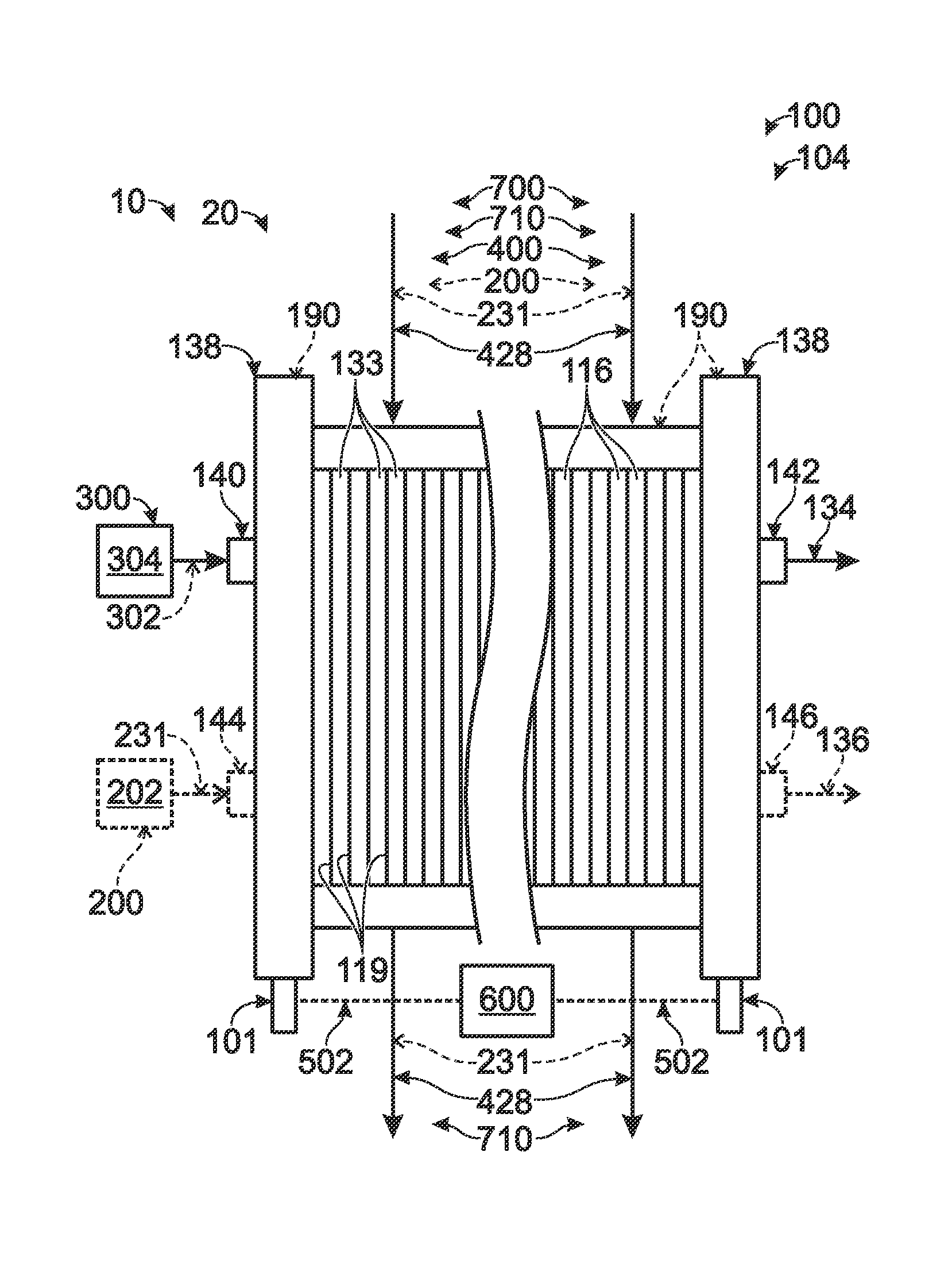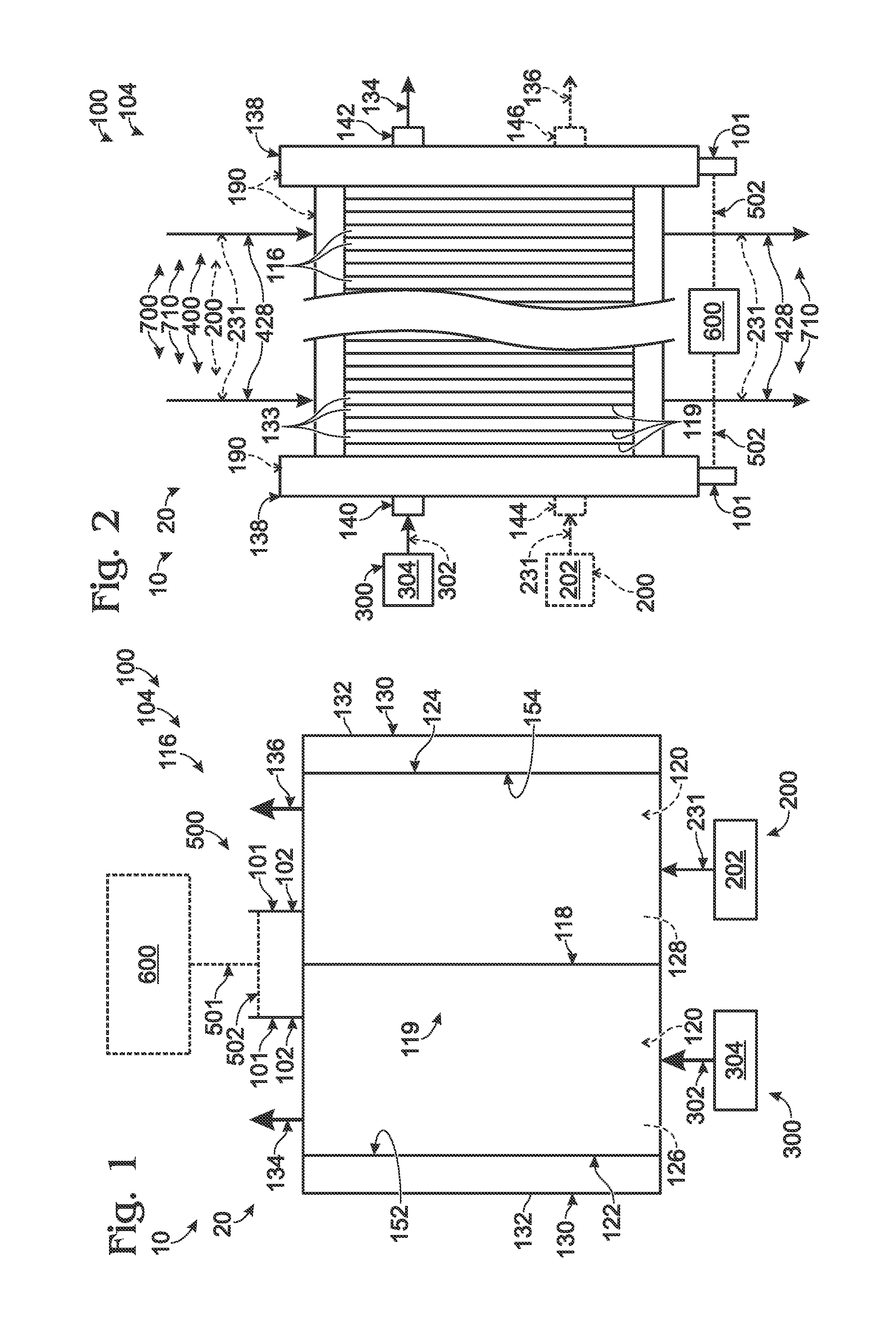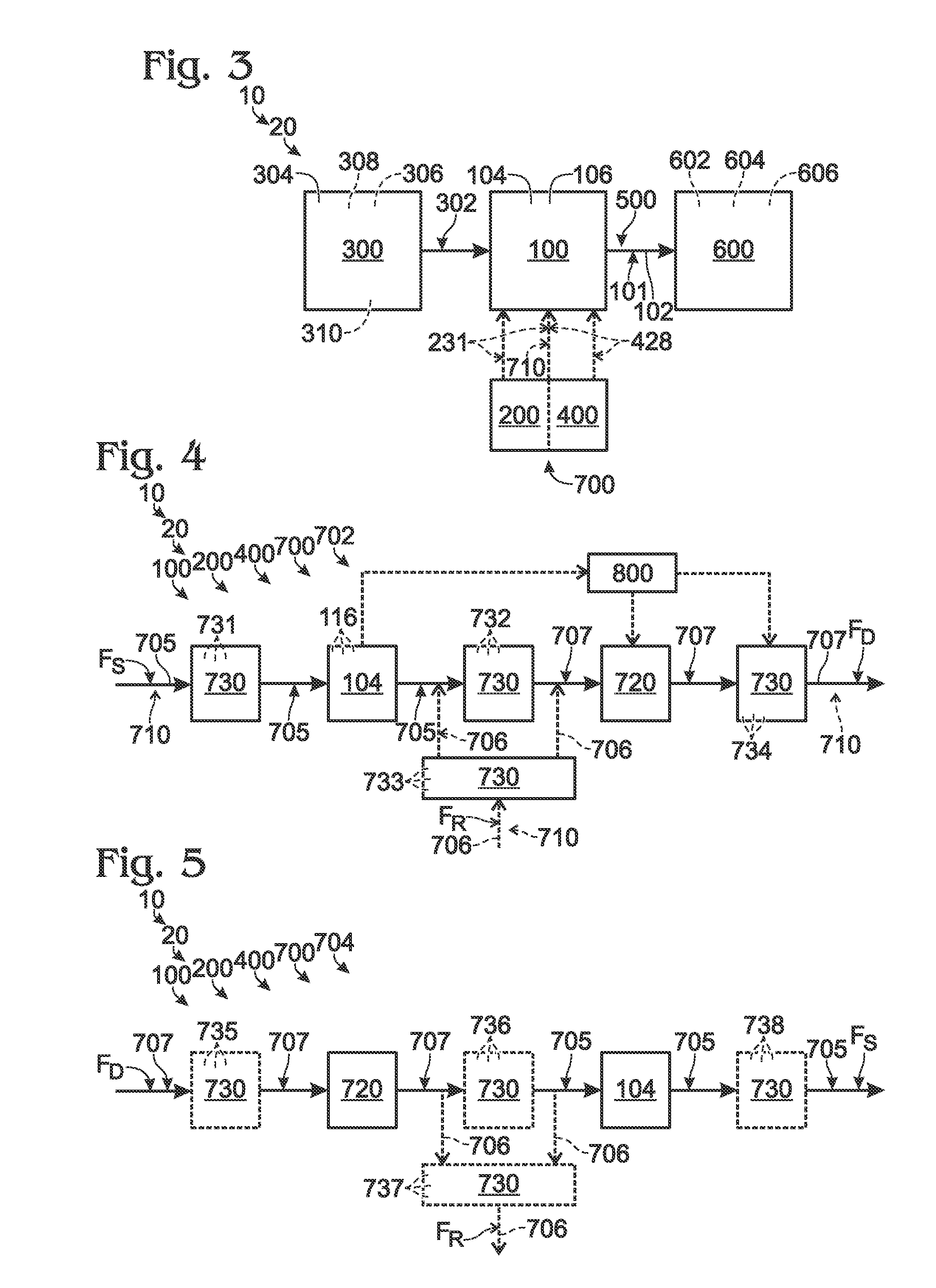Systems and methods for regulating fuel cell air flow during low loads or cold temperature operation
a fuel cell and air flow technology, applied in the field of thermal management systems and methods, can solve the problems of fuel cell air flow, fuel cell may not efficiently produce electrical output, and fuel cell stack undercooling, etc., and achieve the effect of increasing the resistance to thermal management fluid flow
- Summary
- Abstract
- Description
- Claims
- Application Information
AI Technical Summary
Benefits of technology
Problems solved by technology
Method used
Image
Examples
Embodiment Construction
[0025]The present disclosure is directed to systems and methods for regulating the temperature of a fuel cell during low load and / or cold temperature operation. As discussed in more detail herein, these systems and methods may include providing a thermal management fluid to the fuel cell stack, transferring thermal energy between the thermal management fluid and the fuel cell stack, and varying the flow rate of the thermal management fluid that comes into thermal contact with the fuel cell stack to maintain the fuel cell stack within an acceptable temperature range. Varying the flow rate of the thermal management fluid that comes into contact with the fuel cell stack may include varying the overall supply rate of the thermal management fluid within the fuel cell system and / or providing an alternative flow path for the thermal management fluid within the fuel cell system such that a portion of the thermal management fluid supplied by the fuel cell system does not come into thermal co...
PUM
 Login to view more
Login to view more Abstract
Description
Claims
Application Information
 Login to view more
Login to view more - R&D Engineer
- R&D Manager
- IP Professional
- Industry Leading Data Capabilities
- Powerful AI technology
- Patent DNA Extraction
Browse by: Latest US Patents, China's latest patents, Technical Efficacy Thesaurus, Application Domain, Technology Topic.
© 2024 PatSnap. All rights reserved.Legal|Privacy policy|Modern Slavery Act Transparency Statement|Sitemap



